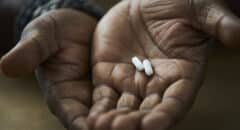 You've heard that weight loss is one of the best ways to manage diabetes. Losing as little as 10 to 15 pounds is enough to improve blood glucose levels, cholesterol, and triglyceride levels, improve blood pressure, and help you to live longer with a better quality of life.
You've heard that weight loss is one of the best ways to manage diabetes. Losing as little as 10 to 15 pounds is enough to improve blood glucose levels, cholesterol, and triglyceride levels, improve blood pressure, and help you to live longer with a better quality of life.
So, you go to Dr. Google and find the CICO diet trending. The CICO diet stands for "calories in, calories out," as long as you burn more calories than you consume you'll lose weight. It sounds pretty straightforward and easy, right? But can it help manage diabetes? And will it work for you? Let’s take a closer look.
What is CICO?
CICO is based on the premise that if you eat fewer calories than your body needs you will lose weight. There are no foods that are off limits. You just determine how many calories you need to promote weight loss and don't exceed that number of calories.
Calorie counting for weight loss is not a new concept. In fact, it’s quite conventional.
But there’s evidence that weight loss is just not that simple. “There are many more factors that affect a person’s ability to lose weight, such as gender and how much muscle mass they have. Also, medical conditions that affect their metabolism,” says registered dietitian nutritionist Tamara Melton, MS, RDN, LD, spokesperson for the Academy of Nutrition and Dietetics.
The CICO diet doesn’t address the fact that different foods contain different nutrients. And there is no guidance on how you should balance for nutrients. Melton says nutrient balance isa critical component in maintaining overall health. “For example, 300 calories in a candy bar doesn’t contain the same amount of fiber, antioxidants, healthy fats or protein as a meal or a bowl of oatmeal made with milk and topped with fruit and nuts,” says Melton.
New York-based registered dietitian nutritionist Sandra J. Arévalo, Director of Nutrition Services and Outreach at Montefiore Hospital in the Bronx, N.Y., says it’s also essential to learn how to read food labels and not just look at calories. “The food label can tell you how much sugar, fat, vitamins and minerals are in different foods,” says Arévalo. “Cutting down on calories is good, but do so while choosing foods that are rich in protein, fiber, vitamins and minerals and very low in sugar.”
Can the diet prevent or control diabetes?
“If a person with diabetes needs to lose weight the CICO diet can help,” says Arévalo. “However, CICO is very general and doesn’t make any reference to the types of foods a person with diabetes can or can’t eat.” A healthy eating plan for diabetes management should emphasize vegetables, fruits, whole grains, and fat-free or low-fat dairy products; includes lean meats, poultry, fish, beans, eggs, and nuts; limits saturated and trans fats, sodium, and added sugars; and controls portion sizes.
If you have diabetes and want to follow CICO Melton suggest you work with a registered dietitian nutritionist (RDN) to determine how to balance both your calorie and nutrients needs. “Figuring out a balanced diet can be daunting, especially for someone with diabetes,” says Melton. An RDN will teach you how to choose healthier foods while staying within your calorie, fat and carbohydrate limits. Click here to find an RDN near you.

Constance Brown-Riggs, is a registered dietitian, certified diabetes educator, national speaker and author of the Diabetes Guide to Enjoying Foods of the World, a convenient guide to help people with diabetes enjoy all the flavors of the world while still following a healthy meal plan. Follow Constance on social media @eatingsoulfully









